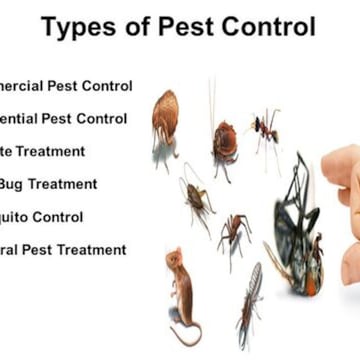Pest Control Fundamentals Explained
The Basic Principles Of Pest Control
Table of ContentsThings about Pest ControlHow Pest Control can Save You Time, Stress, and Money.Pest Control Things To Know Before You Get ThisAll about Pest ControlUnknown Facts About Pest Control
Limitations of Chemical Administration Be able to analyze pest troubles, identify if management is required, and make proper referrals making use of IPM techniques. Be acquainted with various approaches of parasite management - their advantages and constraints.This phase goes over (IPM), a strategy that utilizes expertise about bugs and their, techniques, nonchemical approaches, and pesticides to handle bug problems. Additional details about IPM for particular plants is included in chapters that focus on those plants. Nonchemical insect control measures are emphasized in phase 17, "Organic Gardening." Taking care of birds and mammals is covered in chapter 20, "Wildlife." Handling in the lawn and garden is covered in chapter 6, "Weeds." Parasites in a yard or landscape may consist of pests and termites, weeds,, creatures, and birds.
Many individuals rush to pull, hoe, or spray every weed they see. Bugs and weeds, nevertheless, play a duty in the. After planting a garden or establishing a yard, the all-natural process of plant succession starts to reestablish and nonnative plants. A weed growing in a lawn stands for the initial phase in a series of events that, if enabled to proceed, can ultimately result in a forest.
What we call "insects" become part of a natural system at the workplace. An environment has no insects. Just people take into consideration particular varieties parasites when they happen where they are not wanted. We will certainly be much more successful in taking care of undesirable types when we understand that these microorganisms comply with foreseeable patterns that we can use to our advantage.
Get This Report on Pest Control
Pests at risk to a chemical were quickly killed, leaving immune ones to reproduce and multiply. It became clear that pesticides alone would certainly not address all bug troubles. Instead, overuse of pesticides caused the growth of immune parasites. Researchers started to create a new technique to pest control. This new strategy was referred to as integrated parasite administration (IPM).
An IPM plan permits some level of bugs in the environment. Bugs are a lot less likely to endure a program that utilizes several techniques of lowering their populations. Integrated insect management was very first recommended by entomologists since pests were the very first group of pests to verify tough to take care of with chemicals alone.
A limit is the point at which activity must be taken. IPM has expanded past pests to management of all pest populations: weeds, disease microorganisms, and mammals.
4 Easy Facts About Pest Control Explained
Monitoring instead than obliteration of parasites is the objective. An IPM plan begins with a careful analysis of each parasite invasion.
Clover expanding in a yard may be watched as an unwanted weed, yet as a bean it news is synthesizing nitrogen for the dirt and the blossoms are offering nectar to honey bees and various other. Resistance for some weeds might belong to an IPM plan. might be eating the fallen leaves of a plant, pop over here yet when they are determined as the larvae of Eastern tiger swallowtail butterflies, their damage might be tolerated so we can delight in the stunning butterfly.

The 2nd most essential device in bug administration is very early treatment. Responding to troubles promptly, prior to they have time to increase, requires a much less significant treatment.
The smart Trick of Pest Control That Nobody is Discussing
Several secure, useful, nonchemical approaches of plant security and insect management may reduce or eliminate the demand to spray. Various other techniques are most advantageous when utilized with chemicals. To implement monitoring methods properly and to minimize losses, garden enthusiasts need to understand the kinds of bugs that strike plants and understand pest biology.

Performing a soil test and applying just the recommended amount of fertilizer and lime maximizes the advantage to the plant while lessening troubles connected to extreme use of fertilizer - Pest Control. Covering the dirt with numerous inches of mulch secures the plant in a number of ways: lowering dirt water loss to evaporation, lessening weed competition, providing nutrients, and creating an ideal environment for earthworms and microorganisms that maintain the soil loose for origins and break down natural product to release nutrients
If mulch touches the trunk, it can create a method for voles, bacteria, and fungi to assault the plant. Do not use manure or garden compost that has not completely broken down as a leading clothing because it can encourage unfavorable pests. Study recommends that tilling the soil is damaging to dirt framework.
9 Easy Facts About Pest Control Shown
If tilling is considered necessary, think about doing it in the loss when the life cycles of numerous insects brings them near the surface. At the surface, parasites become subjected to the climate as well as birds and other natural opponents.